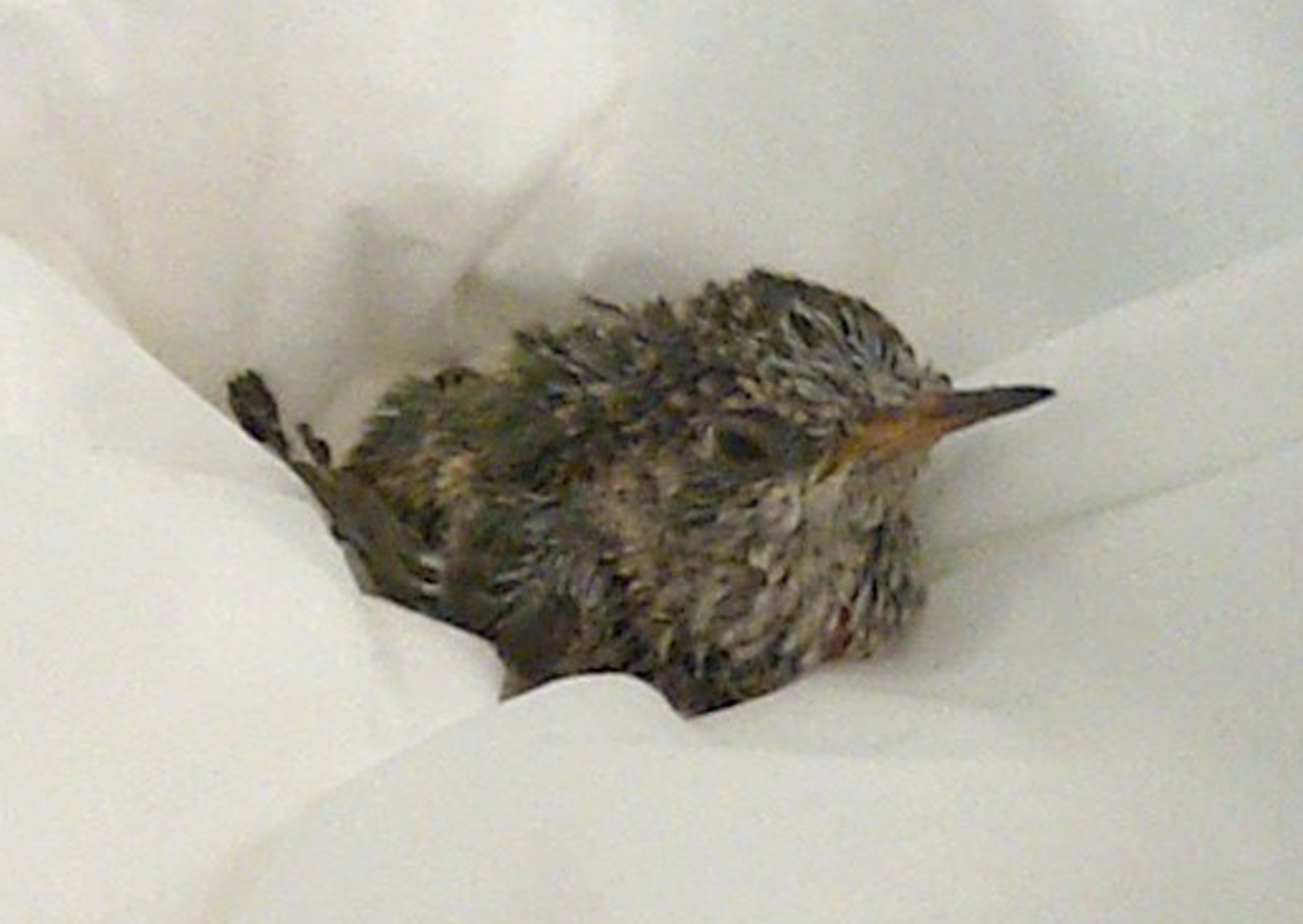How do you care for an avian patient no bigger than your little fingernail? The patient has no feathers, requires a special formula every 15 minutes from dawn to dusk and a consistently warm temperature?
These are the Wildlife Education and Rehabilitations Center’s baby hummingbirds. Caring for them requires unique skills and is extremely time-intensive, so they go to specialized hummingbird homecare volunteers.
Many baby hummingbirds that come to us are “over-rescues” and probably are doing fine on their own. A mother hummingbird rarely abandons her nest, unless she is injured or driven off by a male. Fledglings often end up on the ground where the mother bird will feed them for up to a week, until they can fly. When babies are found on the ground where cat activity is, or in parking lots, or near school grounds, then it is often in the baby’s best interests to bring it in for care.
Raising baby hummingbirds is truly a labor (emphasis on “labor!”) of love, but is gratifying work. The hummers receive care in incubators until they are feathered and able to perch, then they transition to self-feeding, flying and eating on the wing – all while moving into successively larger baskets covered with screen mesh. When they can competently eat on the wing, they make their final transfer to a hummingbird aviary where they build up flight muscles and practice catching small insects. After about 7 – 10 days in the aviary, the birds are ready for release.
We wish them well as they zip out and hope they will avoid being caught by a cat, flying into a window, getting stuck to a white-fly sticky trap, and overcome myriad challenges they face in the wild.

